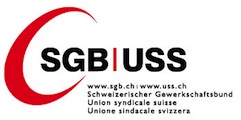Publications des institutions partenaires
Monetary transmission and regulatory impacts: empirical evidence from the post-crisis banking literature
Institution partenaire
English / 01/01/2016
Decoding Financial Networks: Hidden Dangers and Effective Policies
Two changes have ushered in a new era of analyzing the complex and interdependent world surrounding us. One is related to the increased influx of data, furnishing the raw material for this revolution that is now starting to impact economic thinking. The second change is due to a subtler reason: a paradigm shift in the analysis of complex systems.
Institution partenaire
English / 01/01/2016
Financial fragility and distress propagation in a network of regions
Building on previous works on business fluctuations, we model the propagation of financial distress in a network of regions, each populated by heterogeneous interacting firms and banks. In order to diversify risk, firm sell goods outside their own region and borrow from banks located there. However, this results in ties across regions which propagate financial distress across...
Institution partenaire
English / 01/01/2016
DebtRank and the network of leverage
The interconnectedness of the financial system is one of the main factors contributing to systemic risk. The financial crisis has shown how the network of intrafinancial exposures may, in times of systemic distress, amplify initially small shocks. In this work, the authors build on the DebtRank methodology by introducing the notion of a network of leverage and propose a two-round...
Institution partenaire
English / 01/01/2016
Complexity theory and financial regulation
Traditional economic theory could not explain, much less predict, the near collapse of the financial system and its long-lasting effects on the global economy. Since the 2008 crisis, there has been increasing interest in using ideas from complexity theory to make sense of economic and financial markets. Concepts, such as tipping points, networks, contagion, feedback, and resilience...
Institution partenaire
English / 01/01/2016
The financial system as a nexus of interconnected networks
In this Chapter, we describe the phenomenology of multilevel financial networks. Network analysis represents a useful tool for the analysis of financial systems, allowing, in particular, for a better understanding of the mechanics of systemic distress. However, the level of complexity reached by the financial system, coupled with the linkages arising to and from other economic...
Institution partenaire
English / 01/01/2016
Sorry, we're closed: Loan conditions when bank branches close and firms transfer to another bank
We study loan conditions when bank branches close and firms subsequently transfer to a branch of another bank in the vicinity. Such transfer loans allow us for the first time to observe the conditions granted when banks pool-price new applicants. Consistent with recent theoretical work on hold up in bank-firm relationships we find that transfer loans do not receive the discount in...
Institution partenaire
English / 01/01/2016
Option Pricing and Market Risk Management in the Presence of Jump Risk
Institution partenaire
English / 01/01/2016
Der Widerspruch zwischen Neoliberalismus und liberaler Demokratie am Beispiel des Finanzmarktes
Institution partenaire
Deutsch / 01/01/2016
Essays on Optimal Investments in the Mitigation of Global Warming
Institution partenaire
English / 01/01/2016
Valuations of options on discretely sampled variance: A general analytic approximation
The values of options on realized variance are significantly impacted by the discrete sampling of realized variance and may be substantially higher than the values of options on continuously sampled variance (or, quadratic variation). Under arbitrary stochastic volatility dynamics, we analyze the discretization effect and obtain a simple analytical correction term to be applied to...
Institution partenaire
English / 01/01/2016
Shocks abroad, pain at home? Bank-firm level evidence on financial contagion during the recent financial crisis
We study the international transmission of shocks from the banking to the real sector during the global financial crisis. For identification, we use matched bank-firm level data, including many small and medium-sized firms, in Eastern Europe and Central Asia. We find that internationally-borrowing domestic and foreign-owned banks contract their credit more during the crisis than...
Institution partenaire
English / 01/01/2016
The bank lending channel of monetary policy: A review of the literature and an agenda for future research
Institution partenaire
English / 01/01/2016
Shedding light on dark markets: First insights from the new EU-wide OTC derivatives dataset
Institution partenaire
English / 01/01/2016
Collateral frameworks: The open secret of central banks
Central bank collateral frameworks are an often overlooked feature of monetary policy that play a key role in the monetary and financial system. Readers will discover how central banks conduct and implement monetary policy beyond merely setting interest rates, and develop their understanding as to how collateral policies may affect financial markets, financial stability, and the real...
Institution partenaire
English / 01/01/2016
The dynamics of insurance prices
We develop a continuous-time general-equilibrium model to rationalise the dynamics of insurance prices in a competitive insurance market with financial frictions. Insurance companies choose underwriting and financing policies to maximise shareholder value. The equilibrium price dynamics are explicit, which allows simple numerical simulations and generates testable implications. In...
Institution partenaire
English / 01/01/2016
A non-stationary model of dividend distribution in a stochastic interest-rate setting
In this paper the solutions to several variants of the so-called dividend-distribution problem in a multi-dimensional, diffusion setting are studied. In a nutshell, the manager of a firm must balance the retention of earnings (so as to ward off bankruptcy and earn interest) and the distribution of dividends (so as to please the shareholders). A dynamic-programming approach is used,...
Institution partenaire
English / 01/01/2016
The shadow costs of repos and bank liability structure
Making use of a structural model that allows for optimal liquidity management, we study the role that repos play in a bank׳s financing structure. In our model the bank׳s assets consist of illiquid loans and liquid reserves and are financed by a combination of repos, long-term debt, deposits and equity. Repos are a cheap source of funding, but they are subject to an exogenous rollover...
Institution partenaire
English / 01/01/2016
How time preferences differ: Evidence from 53 countries
We present results from the first large-scale international survey on time preference, conducted in 53 countries. All countries exhibit hyperbolic discounting patterns, i.e., the immediate future is discounted more than far future. We also observe higher heterogeneity for shorter time horizons, consistent with the pattern reviewed by Frederick, Loewenstein, and O’Donoghue (2002)....
Institution partenaire
English / 01/01/2016
Baseline choice and performance implications for REDD
Reducing Emissions from Deforestation and forest Degradation (REDD) projects are being designed and implemented across tropical countries, intending to curb the contribution of deforestation to greenhouse gas emissions. An important aspect of REDD implementation is the baseline against which reductions are measured. The baseline estimates the business-as-usual emissions from...
Institution partenaire
English / 01/01/2016
Pages
Le portail de l'information économique suisse
© 2016 Infonet Economy












